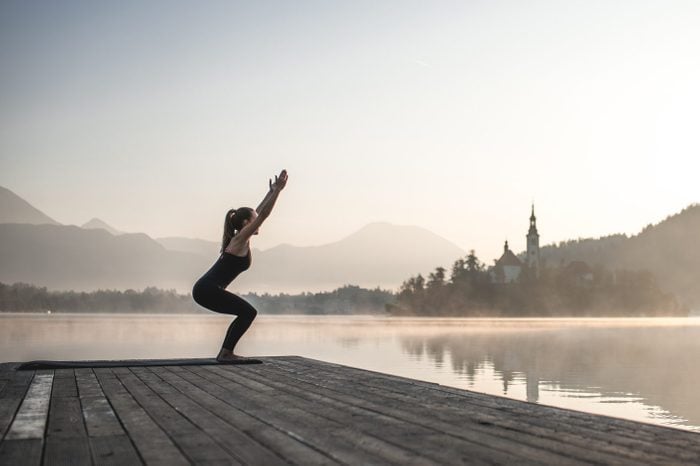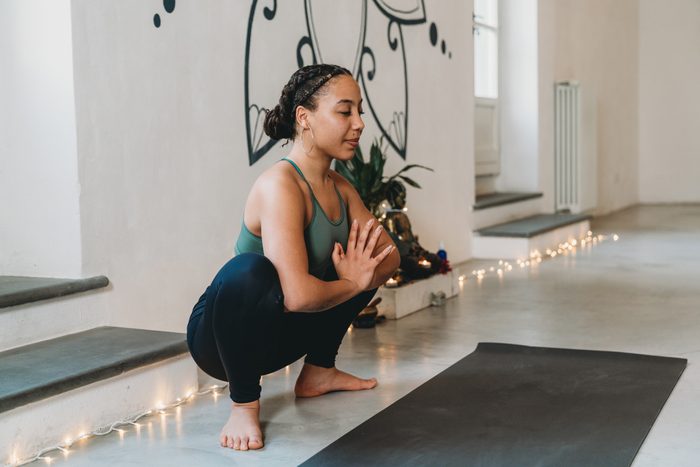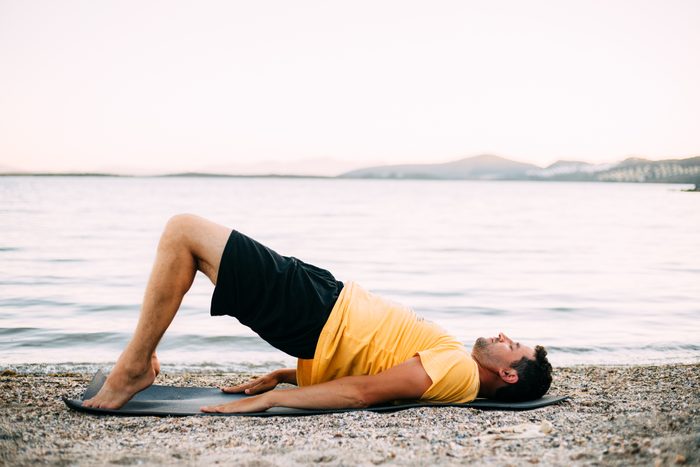
When you’re searching for how to strengthen your pelvic floor, the first recommendation is often Kegel exercises. Research has established that Kegels can be effective—but you can also leverage your current yoga practice to make your pelvic floor stronger. As a doctor of physical therapy and a YogaRenew Teacher Training instructor, one of my principles to strengthen the pelvic floor is to strike a balance between strength and flexibility.
The pelvic floor refers to a group of muscles that sit at the bottom of the “pelvic bowl.” With the hips as a woman’s center of gravity, the pelvic muscles provide stability to the whole body—as they support back strength, posture, bowel and bladder function and sexual function.
Due to all the roles the pelvic floor plays in pelvic stability and reproductive and gastrointestinal wellness, concentrating on this area of the body can be relevant for all yogis—including those who are pregnant or postpartum—as well as all aging women (and let’s be thankful: We’re all aging!).
Here are four yoga poses that can help strengthen your pelvic floor.
A Bone Health Doctor Just Listed the 12 Best Yoga Poses To Strengthen Bones

Ananda Balasana (Happy Baby)
Benefits: Happy baby is a pose for pelvic floor lengthening and relaxation. It truly elongates the pelvic floor muscles and stretches the surrounding muscles of the hips and pelvis that can contribute to pelvic floor tightness.
Since this pose is performed on the back, it also minimizes the demand of gravity of the pelvic floor. This gives those muscles a chance not only to elongate, but to relax and let go.
Tips: As long as you are comfortable and can let go of any tension, this pose can be held for a few minutes. Extending the duration you hold this pose will allow you to connect with your breath and release any resting tension in the pelvic floor muscles. If you have a hard time reaching your ankles and relaxing, just grab a strap.
The 5 Best Yoga Poses for a Healthier Gut, from a Registered Yoga Teacher

Malasana (Squat)
Benefits: Due to the deep flexion and opening of the hips, malasana lengthens the pelvic floor. Yet, entering, exiting and holding malasana in its full expression requires strength of the pelvic floor—so it’s a great pose for both lengthening of the pelvic floor, and strengthening it.
An added benefit for pregnant yogis: Later in pregnancy, malasana is also a wonderful pose to help open the top of the pelvis and make room for baby to move down while lengthening the pelvic floor.
Tips: To make malasana more focused on lengthening and relaxation of the pelvic floor, place a block or two under your sits bones and focus on connecting to the breath. (Even better: Think about relaxing the pelvic floor as you inhale.)

Utkatasana (Chair Pose)
Benefits: Chair pose requires strength of the pelvic floor and surrounding lumbopelvic muscles, making it an optimal pose for pelvic floor toning.
Tips: Sometimes the pelvic floor needs a little extra help from surrounding muscles, like our inner thighs. Try placing one block in between your thighs, and one on the low wide setting between your feet, to help engage the surrounding muscles.
Here’s How Long You Should Hold a Yoga Pose, Says a 50-Year Expert

Setu Bandha Sarvangasana (Bridge Pose)
Benefits: As mentioned earlier, the pelvic floor provides stability to the pelvis. But in order to do so, it must work with other muscles around the pelvis. Bridge pose allows us to strengthen the pelvic floor and those surrounding muscles together, as we lift the pelvis up off the ground.
Added benefit for postpartum yogis: Bridge can be a great way to start toning the pelvic floor and surrounding muscles early on without the stress of gravity acting down. Try a folded blanket under the hips if you’re experiencing any prolapse or heaviness in the pelvic floor.
Tips: Actively engage the pelvic floor as you exhale and lift into bridge pose. Are you experiencing discomfort or want to encourage added toning of the pelvic floor? Try placing a block between your thighs.
